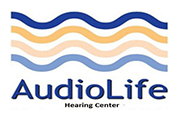
It’s a tough pill to swallow, for many, coming to grips with and acknowledging the reality of hearing loss. Nonetheless, you soldiered on and visited a hearing professional for a hearing aid fitting session, because you recognized that’s what is best for your health. Most likely, you immediately recognized the advantages one gets by wearing a hearing aid, including the ability to treat tinnitus, hear speech (even amidst the buzz of background noise), and the possibility of recovering from cognitive decline.
But occasionally, amongst all those life-changing advantages, you get one loud, piercing and shrieking downside. You get a loud whistling sound from your hearing aids. Feedback is the more familiar word for this whistling. It’s just like what happens to a sound system when you bring a microphone too close, but it’s directly in your ears. This, fortunately for you, is a problem that can be fixed fairly easily. Stopping your hearing aid from squealing can be accomplished using the following guidelines:
1. Adjust The Fit of Your Hearing Aid
The positioning of the hearing aid in your ear or the earmold it’s connected to is probably the most prevalent reason for feedback. The sound can get out and reverberate through the microphone of the hearing aid if it doesn’t fit properly. The result of that leakage can be a whistling that’s either intermittent or constant, depending on how much sound has escaped and how poorly the fit actually is. A plastic tube connects some hearing aid designs with an earmold. As time passes, this piece can harden, shrink or crack, which unseats the earmold from its best position. If you switch out the plastic piece, you can fix the whistling which is caused by this movement.
2. Excessive Earwax Should be Removed
Earwax is actually good for our bodies, even though, ironically, we tend to think of it as unwanted or even nasty. Dirt and other things are prevented from getting into the ears by this gooey substance which acts as a defense. Actions, like talking or chewing help your ears regulate the amount of earwax they produce but there can be a negative effect if too much earwax accumulates. Feedback will unavoidably occur if you insert a hearing aid on top of too much earwax. Due to the blockage from earwax, the amplified sound can’t go anywhere and this is the reason for the feedback. The sound circles back into the microphone because it has no clear exit. There are a few ways to eliminate an overabundance of wax from your ears such as letting a warm shower run into your ears. However, the best idea might be to speak to a hearing specialist about properly cleaning your ears to avoid undue accumulation and subsequent whistling.
3. Make Sure The Microphone is Uncovered
Often the most successful solution is the most obvious. Have you ever noticed someone attempting to take a picture which didn’t come out, only to find that the lens cap was still on? With hearing aids the same thing can happen. Whistling can happen when something is covering the device. If you cover the microphone with your hand or something else, you get the same outcome, like if you give someone a hug and put your ear into their shoulder. This issue should be easy to fix just by uncovering the hearing aid.
Here’s a bonus tip: Think about purchasing a new hearing aid. Manufacturers are routinely developing new hearing aid technology into devices, and we’ve already seen modern models decrease some of these causes for worry. Call us if you are interested in learning about new hearing aid technology or if you are having trouble with your current hearing aids whistling.
